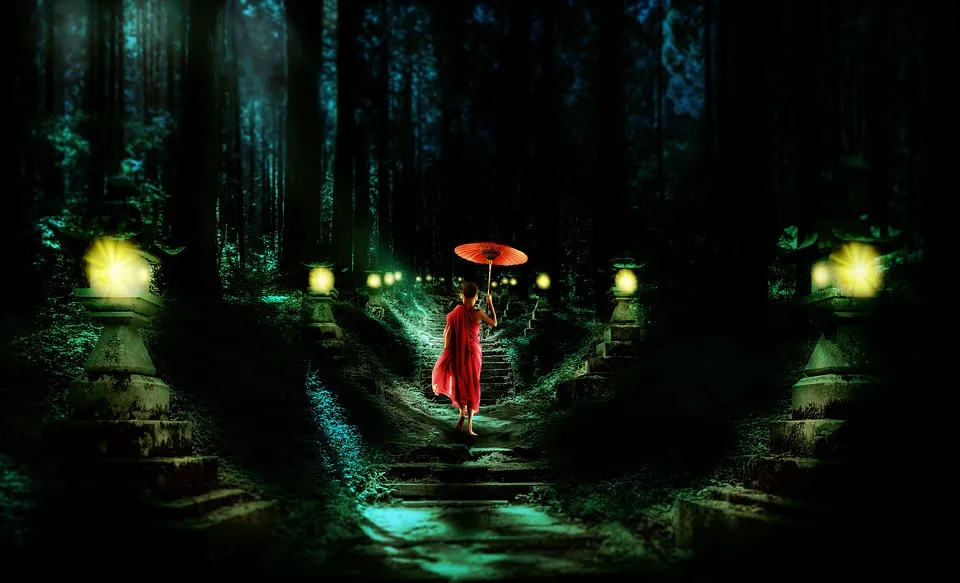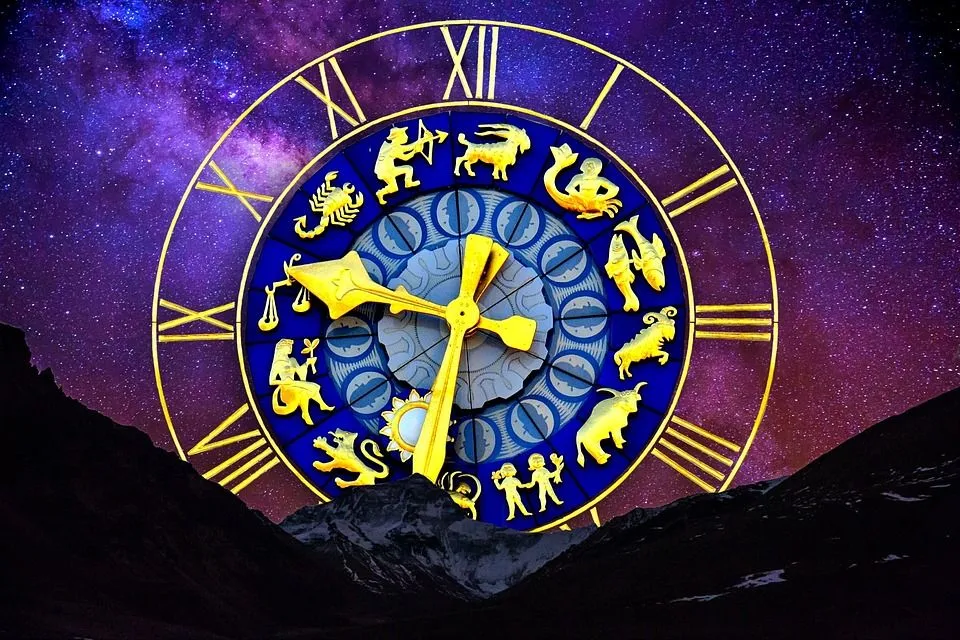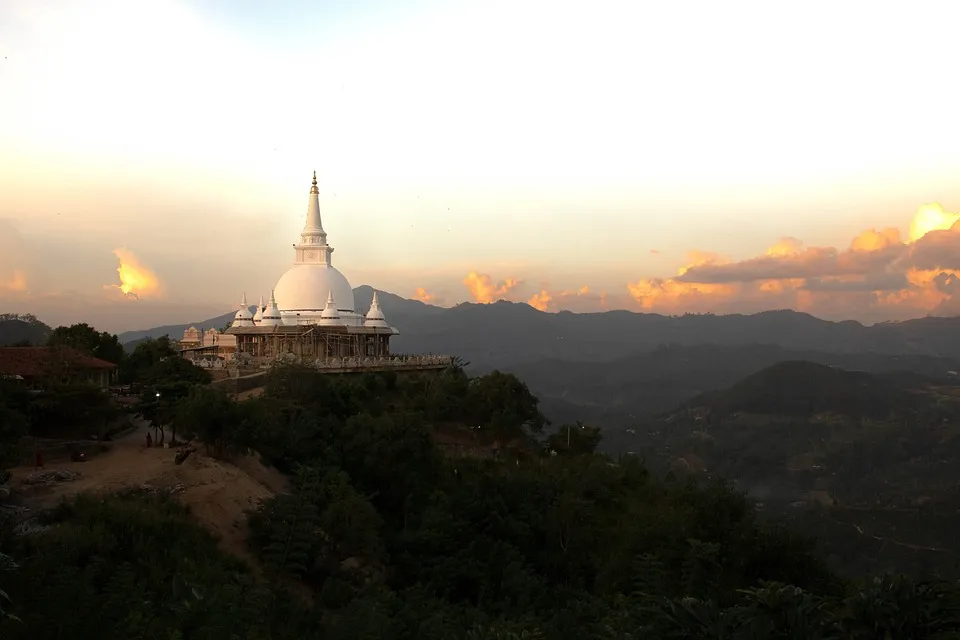Ajamiel begins on the right footing
Today in chapter two I continue the strange tale of our hero Ajamiel, who walked a similar path to the Buddha, although he deviated from the middle way to slip very left-of-center for most of his life, until the very end, when a miraculous experience still saved the day at the eleventh hour. And I can’t say for certain just how far back in the history of mighty India he lived, but it appears to be way back in the mists of time, long before king Harsha - and even the Buddha himself - appeared in the region, thousands of years ago.

When he was old enough, Ajamiel’s parents sent him to learn a priestly education by studying the Vedas and following the regulative principles. He went to live in the school of his teacher and trained daily, rising at 4am to catch the most auspicious hour of the day for meditation. The ancient texts of the land we today call India, were already present for perhaps thousands of years, according to some references, and they were full of details unimaginable for such a pre-historic civilization, if we are to believe the academics. Yet the texts speak for themselves.
Mastery of time as a brahminical quality
It’s hard for us to imagine such lengths of time, especially when we’re young ourselves. In fact time as a concept was very strictly managed and measured in the ancient days, despite our western scholars sometimes telling us that the ancients were more primitive that we are today. Such scholars are sometimes nationalistically motivated and especially under the British Raj or Indian colonial times, western scholars tended to skew the narrative to show the west as superior and Indian history as more primitive by comparison.
Those who have done their research know that this speculation is easily refuted today. Ajamiel’s time in history was actually one of high culture and curiously also scientific insight, although perhaps different from our insights. For example the 24 hour day was divided into 48 minute long periods called “muhurtas”. The most favorable period for meditation is the period from 96 min before sunrise until 48 min before sunrise, the second to last “muhurta” before day begins. This particular “muhurta” is the best for capturing the favorable electromagnetic frequency of the earth at that time of day, and that’s why Ajamiel’s priestly training included rising at 4am daily to catch this moment without fail.
Training in the priesthood
All this intense training and meditating also included a very strict regimen which required strict abstinence from meat products, alcohol or intoxication, illicit sex and gambling. Sex was only for married couples to procreate children, and so young students were strictly celibate in the early years leading up to marriage as an adult. In this way Ajamiel was well trained and lived a pious life, free from distractions while he studied the texts and performed the rituals and ceremonies that purify ones life.
I can’t claim to know the roots of all the strange practices of the ancient Vedic culture in which Ajamiel lived so many thousands of years ago. All I can do is describe what I have read in the Bhagavat Purana. Indeed not all Sanskrit scholars even accept these Puranas as real Veda or part of the Vedic literature. So much speculation continues today. I simply wish to convey this strange tale so that it can be recorded here on the blockchain in digital format for posterity.
Truth is stranger that fiction and many a true word is said in the guise of myth. Many a truth is cloaked as legend or fable. Make of such tales what you will. The realizations are within the mind of the hearer. I am merely the messenger transplanting this ancient tale into cyberspace. My telling may be flawed and so much may be lost in translation already, yet this tale remains as it is.

Astrology as one of the priestly arts
Ajamiel’s training in the priesthood included all the various departments required for a person to be qualified to perform the service to society of a priest. This involved learning to recite the Sanskrit mantras and prayers that brought purification and revealed mystical or esoteric wisdom regarding the eternal spirit soul. It also involved the rituals and ceremonies to be performed at the certain times of day, periods of the year or of a person’s life.
It also included training in astrology and the construction and deciphering of the horoscope. This is where the focus on time and its varying measurements was so important. For example 30 muhurtas of 48 min each, makes up a 24 hour day of 1440 min in total. Add to this the time measurements of Great Ages, including the day, night and twilight of the gods, called Yugas, which comprise of millions of years in total. Such are the descriptions in the Sanskrit texts studied by Ajamiel and any brahmana youth qualifying to be a priest.
Did Vedic knowledge migrate from west to east or vice versa?
Scholars still speculate whether this intricate knowledge of time measurement and the movement of the heavenly bodies and constellations originated in the west or the east. No one knows for sure among academics today. Was this mathematical capacity discovered by the Greeks and Mesopotamians and brought to India or was it the other way around, with knowledge moving from east to west with time? Either way, it suggests that the ancients were perhaps far more learned or advanced than modern academics are willing to admit, although that theory is shifting with more insight as time progresses.
Ajamiel learned all these departments and more, for the monastery trained the students to understand and control body, mind and subtle body as well. All of this was in the yoga and meditation practice that the monks experienced on a daily basis for years on end. But there is more. I will tell you about the strange tale of Ajamiel the brahmana boy who went from monk to misfit to meeting the messengers of the gods. You won’t want to miss the twist in the tale.
Ajamiel betrayed by his senses
Listen now dear reader as I continue my fantasy tale of the young monk Ajamiel, who went from being a monk priest to being bewildered by a prostitute, to remembering his roots at the final step of life. The mysteries of this epic tale are lost upon me, yet I try to make some sense of it and see it as perhaps a glimpse at something beyond my comprehension. The tale tells of the young brahmana boy who was raised in a good and pious family who sent him to the monastery to be trained as a priest. Only the priests were able to read the Sanskrit texts in those days. It was a rare privilege.
Ajamiel as a pious and skilled student
Ajamiel was expert at memorizing and reciting the Vedic literatures. Not only a sharp mind but also a good character, he had. He was known for his good qualities. In other words he had really succeeded in his priestly activities. The mind was kept under control, as well as the senses. For example there would be fast days at the monastery, remote in the forest and high in the hills, far from the busy towns and cities.

Strict sense control, starting with the tongue, is key for a monk
Besides being strictly vegetarian, and abstaining from meat, fish, chicken or eggs, there would be no tea or coffee, of caffeine drinks, or opium in those days in those parts of the world for these monks. Ajamiel would not even eat bread bought from the local bakery in the village down the hill because he only ate food cooked by his fellow brahmana priests. It was too dangerous for him to risk picking up the lower consciousness from the baker of the bread.
Every fortnight there would be a fast day called Ekadashi. It was the eleventh day of the waning moon and eleventh day of the waxing moon cycle, both of which have a 14 day period. This in total makes up the 28 day lunar cycle. Ekadashi means “eleventh day” basically. This was the day when monks would intensify their meditation and increase their bodily renunciation.
Fasting for advancement on the path
For example some monks would abstain from cooked food, or grains, or even from all food, so that they would not eat a morsel or drink – if they were able – until the following sunrise, or thereabouts, according to the calculations of the astrologers. And all attention to the body was minimized, so that one would not shave or even sleep at the more intense levels of meditation. One would stay up all night and chant mantras and meditate while trying not to fall asleep. Ajamiel had spent many a fast day controlling his mind and senses to sharpen them into a precision instrument.
Ajamiel was by nature very mild and gentle, and was always truthful. The quality of truthfulness is one of the last legs of the cow called “Dharma” or religion today. The other three legs have been smashed and piety is down to a mere fragment of what it used to be in previous ages. The other three legs included mercy, austerity and cleanliness. Those three are already much reduced, while at least truthfulness was said to linger in this, the last and darkest age of Kali Yuga.

Knowledge of creation and the four “yugas” or great ages
The four great ages that make up the creation, or one day of Brahma the creator, begin with one of gold, then fall to silver, copper and finally lead, where we are today. This final age – according to some Vedic subsidiary texts like the Bhagavat Purana – is a fallen age where the best qualities of humanity have already left. We are in the last age and it leads to a final annihilation of the planet, perhaps the solar system, in 427 000 years from now. So we still have some time.
This grand cosmology and the creation by Brahma was all part of the Ajamiel’s studies, including the rotation of the planets visible to the naked eye from earth, namely Mercury, Venus, Mars, Jupiter and Saturn. Added to that was the plotting of the 28 primary constellations of fixed stars that make up the backdrop of the heavens and our solar system.
Respect as a trait of the purified acolyte
All of this was taught to Ajamiel. Besides that, he was very respectful to his spiritual master, the head of the monastery or ashram where he trained for all those years. He was also taught to be respectful toward the fire, guests and the elderly members of his household. Such respect – at least for the age of the person and their experience – is healthy in a young person, and today we may see such respect for the elders in some cultures, but not in all. It’s a dying trend.
Ultimately a yogi or spiritual seeker is taught to be respectful to all living entities. He or she sees the divine in all life and regards it as sacred, never to be abused or exploited for our selfish ends. In other words we envy no one and wish wellness upon all living entities. That’s how Ajamiel saw the word, based upon the teachings he studied in the classes day after day.
How is it that such a well-trained and pious soul like Ajamiel could one day fall from such an exalted level of training and practice? If you want to know then tune in tomorrow as I explain further the strange tale of Ajamiel the modest monk, who was caught up in the web of goddess Maya, the prison warden of this material world in which we all survive.
(images pixabay)